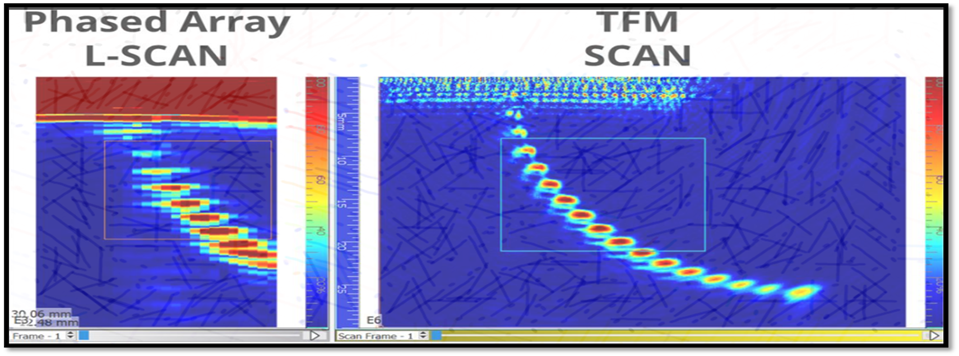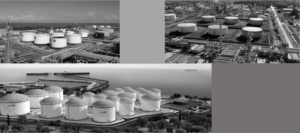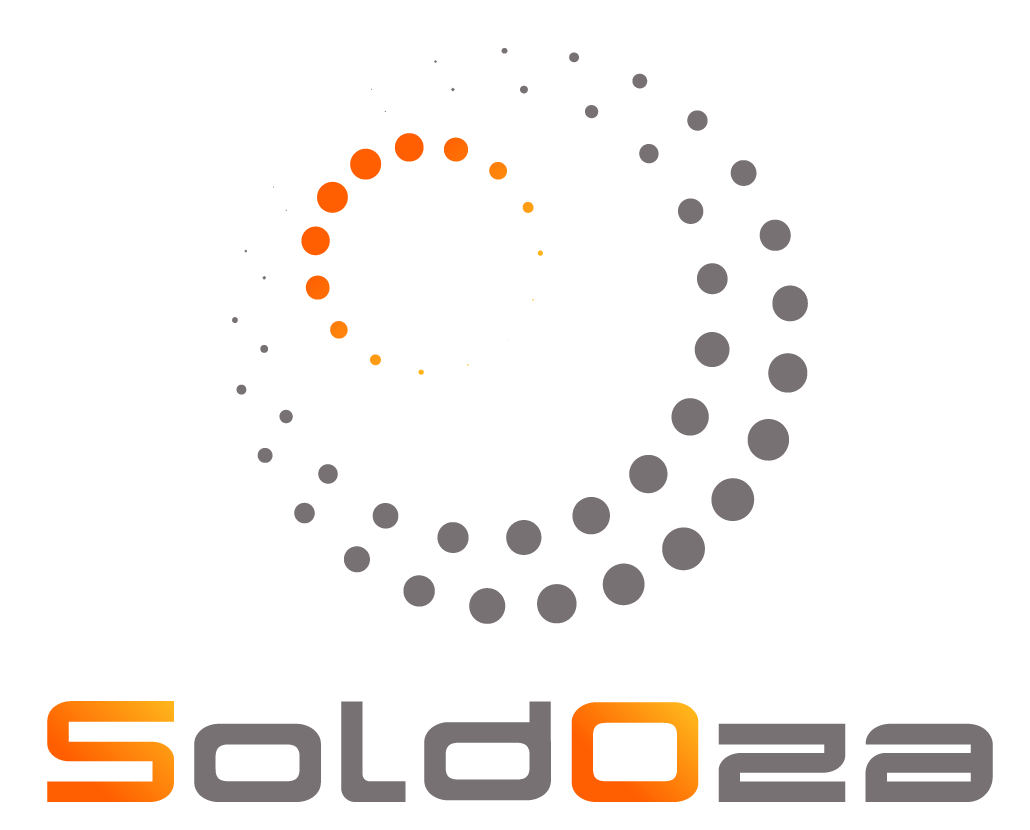Total Focusing Method (TFM) a New Technique for Small Defect
By: Eng. Jesus Eduardo Contreras
Phased-array technique has been used for years and approved in many NDE applications thanks to its flexibility and the great improvement in productivity. They can display ultrasonic data as sectorial or linear images (S-scan or E-scan) allowing an inspector to see instantly a complete zone of the component and thus interpret data more easily. These images are obtained by applying time delays to each element of an array probe. But now, recent developments in Non-Destructive Testing (NDT) technology have resulted in new techniques as Total Focusing Method (TFM).
Let us summary the key difference between Phased Array Ultrasonic Testing (PAUT) and Total Focusing Method (TFM):
Is one better than the other?
PAUT and TFM may offer equal or improved detection capabilities depending on the type of inspection being performed. With PAUT, inspections are generally unfocused and could be less effective for detecting smaller defects. On the other hand, TFM produces an image where each pixel is the result of a focused beam. This makes TFM the ideal candidate for detecting small defects such as High Temperature Hydrogen Attack (HTHA), solitary inclusions or porosities and crack-like defects thanks to an improved sensitivity of tip diffraction echoes.
Let see a case: High Temperature Hydrogen Attack (HTHA), HTHA occurs in an environment containing hydrogen and high temperatures, typically in low alloy steels. High temperatures change the atomic form of hydrogen which makes it permeate into the steel, react with carbon, and form methane. Because the methane gets trapped in the metal, it ends up creating a microscopic bubble at the grain boundaries in the steel; this is stage one. As bubbles start to grow, they start to coalesce as stage two, ultimately leading to fissures and cracking at stage three. HTHA commonly occurs in welds and Heat Affected Zones (Figure 1)

(HAZ) in materials that never received heat treatment. Many refinery owners have started additional inspections for HTHA after the component failure that was not anticipated to be susceptible to high temperature hydrogen attack. However, HTHA defects are exceedingly small and it is quite difficult to detect with conventional ultrasonic testing (UT) or any other volumetric non-destructive testing method.
The TFM method, thanks to its focusing capabilities, offers higher sensitivity of detection to small defects such as the micro-cracks generated by the HTHA process. By focusing the ultrasonic energy to a small spot, the TFM is sensitive to these small defects. To see 300-micron size defects, probes frequency 5 to 10 MHz is used. With the TFM, an excellent resolution is obtained whatever the depth of the defects. Plus, it is real-time for field operations. The technique has been recently introduced by Oil & Gas companies and training centers as a mean to detect HTHA damage at an early stage.
TFM offers high-resolution images that allow the detection and characterization of both HIC and HTHA damage (Figure 2). The availability of portable equipment capable to perform real-time TFM offers a new tool to the NDT operator arsenal.

Despite the small size of the HTHA damage, we see that the TFM technique allows the detection of early micro-cracking with a good Signal-To-Noise ratio. The representation also makes it easy to interpret the data.
Do not miss our article about Total Focusing Method (TFM)! If you want to learn more about these and other techniques, please contact us!




